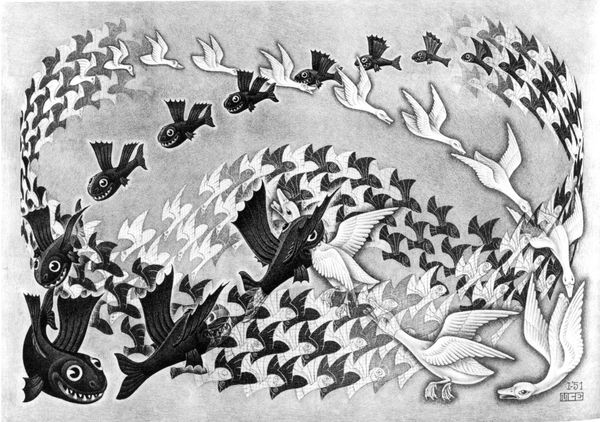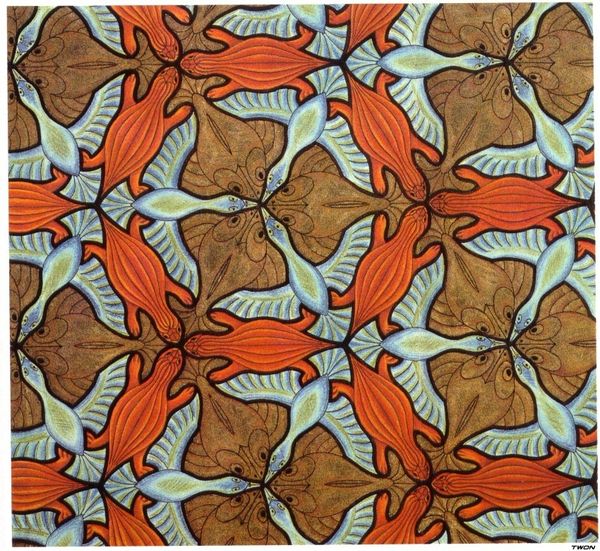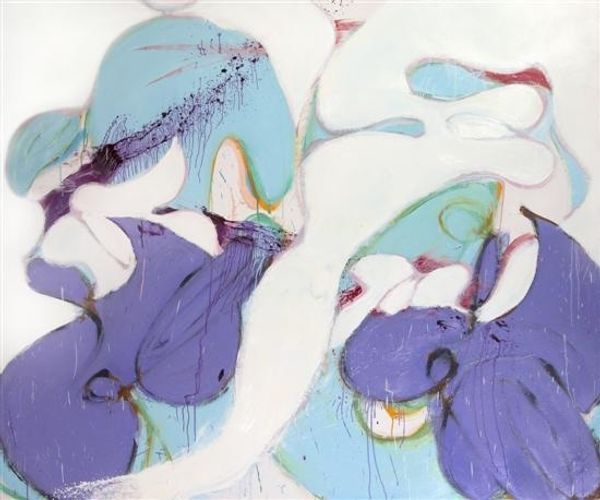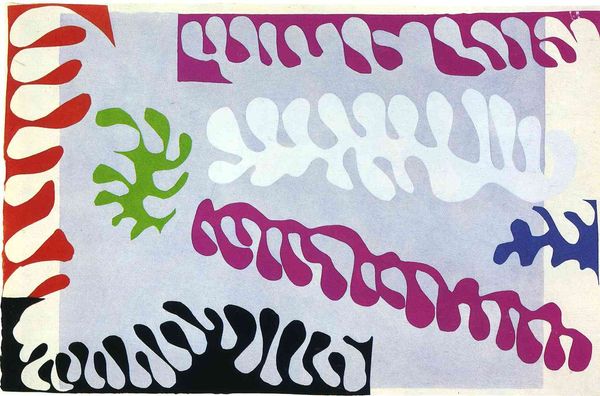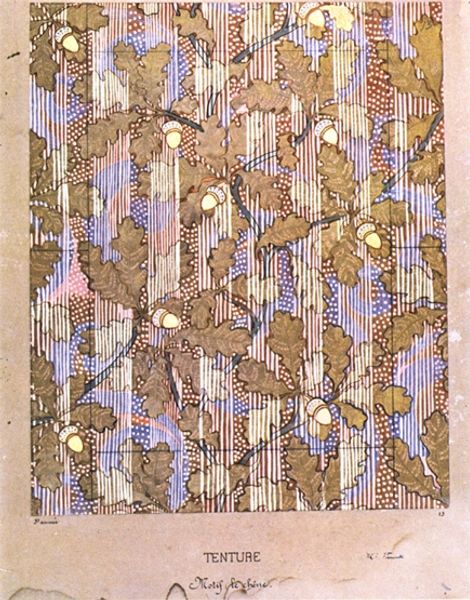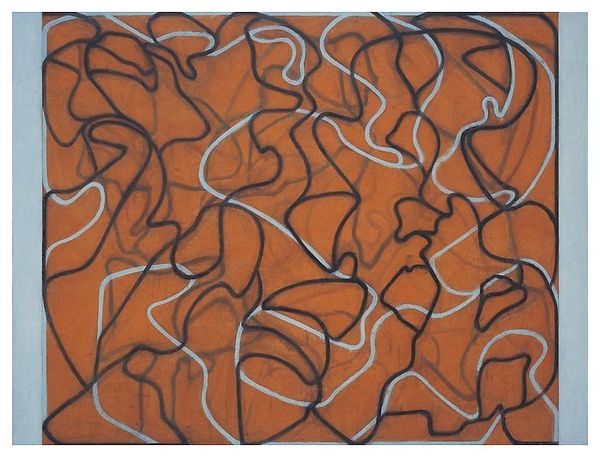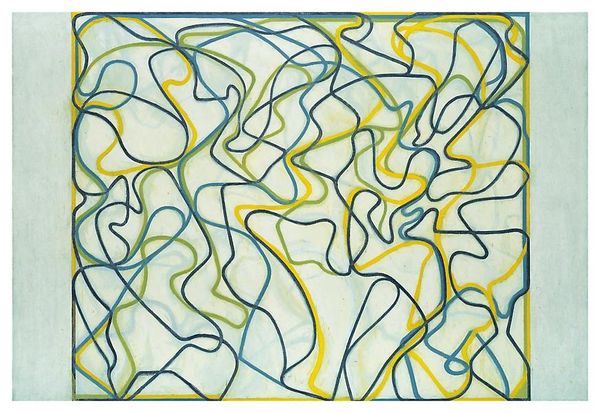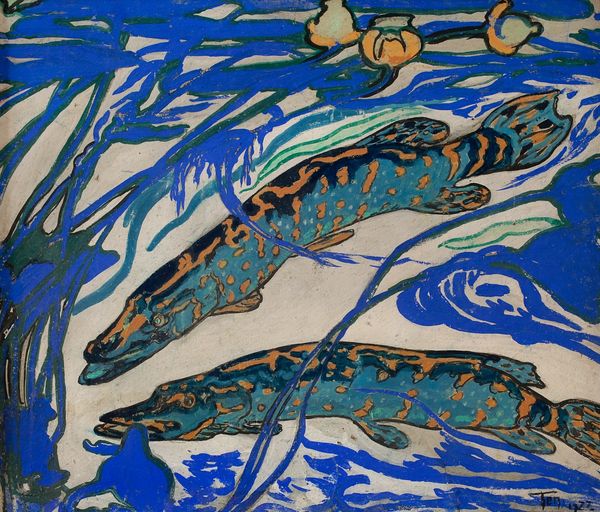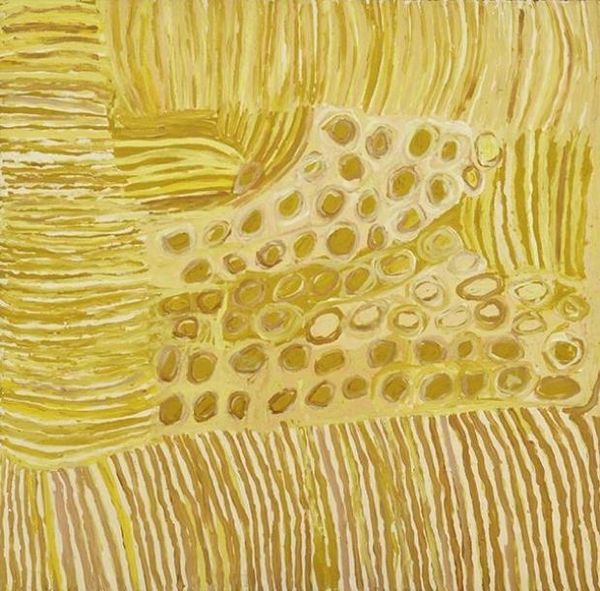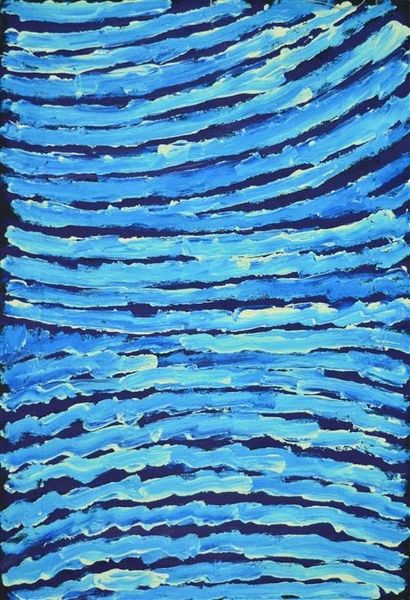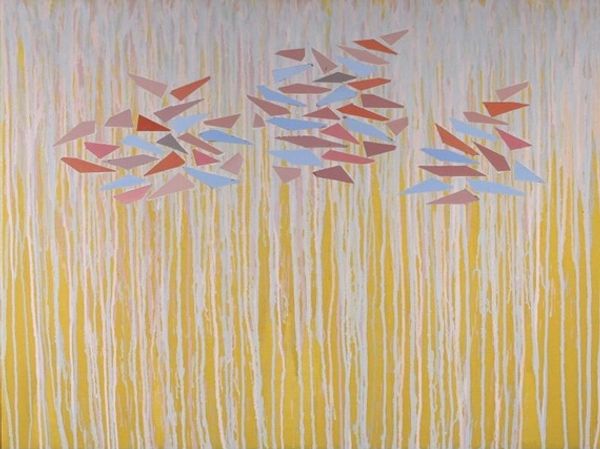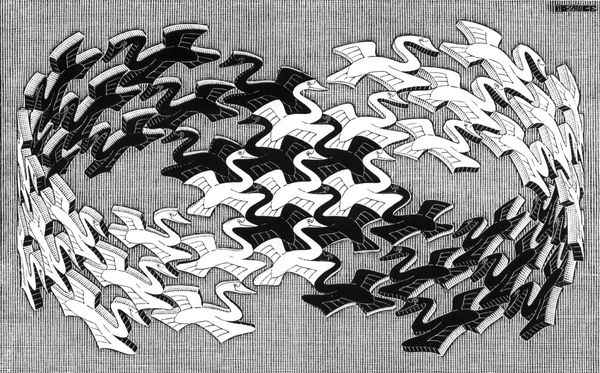
painting, watercolor
#
organic
#
fish
#
painting
#
pattern
#
landscape
#
watercolor
#
organic pattern
#
realism
Copyright: Neil Welliver,Fair Use
Curator: Looking at Neil Welliver's "Two Trout & Reflection" from 1994, I'm struck by how he abstracts the natural world. The piece is currently held at the Alexandre Gallery in New York City, created with watercolor on paper. Editor: Immediately, I feel a sense of serenity, even quietude, despite the implied movement of water and fish. It almost feels like I'm looking through a kaleidoscope of nature. The palette of earthy browns and muted blues contributes to that calm feeling. Curator: Absolutely. Welliver often focused on depicting specific locations, particularly the Maine wilderness. This artwork feels like a microcosm of that, inviting viewers into a private ecosystem he painstakingly documented across his career. He made his paintings to assert an almost radical appreciation of wild spaces. Editor: And the trout themselves? Fish imagery, since early Christianity, has held symbolic weight, usually connected to rebirth, fertility and fluidity. Here, they seem less overtly symbolic, and more part of a larger system – one element among water, and substrate, with their patterned skin providing another motif of the natural world. It seems like a modern depiction of natural forms. Curator: That's interesting; certainly Welliver pushed against established artistic trends. Instead of embracing complete abstraction that dominated much of the later 20th century, he insisted on observation of the real world. We must also consider his technique – watercolor can be so hard to master; Welliver creates a striking tension through precise observation mixed with expressive fluidity. It represents, perhaps, our own precarious existence amidst constant change and evolution. Editor: I concur; Welliver shows the dynamism of an ecosystem not by hyper-realism, but through the carefully balanced interplay between pattern, reflection and suggestion. Seeing the shapes merge allows a sense of nature's interwoven elements. Curator: He wasn't didactic; he was more involved in representing what nature, untampered with, looked and felt like. It's as relevant today as it ever was. Editor: This piece indeed presents an image for quiet reflection on the way in which we both perceive and portray the environment.
Comments
No comments
Be the first to comment and join the conversation on the ultimate creative platform.
